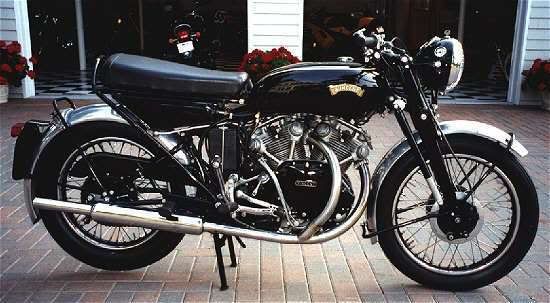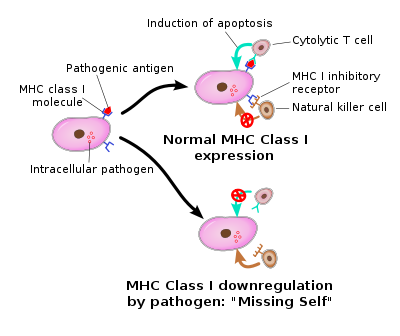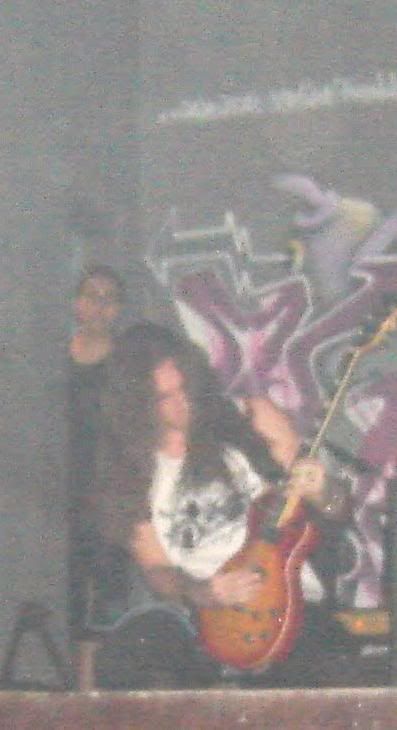 Miss Gaboooo Cotosck Vintersorga.
Miss Gaboooo Cotosck Vintersorga.I had ideas such as Axegrinder, Axebanger, AxeCrusher.
So she came up with the idea: Crushing Axes.
Then I stole the idea without paying any royalties. Of course !
She also listened to the very first demos from Crushing Axes, and really helped me to get the right tone.
Thank's Gabooo ! ;)

The axe you see on the first cover "Bloodfield In Hell", belongs to this guy above.
He's a long time friend. He's also the drummer of my other band. Legacy Of Death.
[2008] Bloodfield In Hell
2 - Black Shadow
Black Shadow is actually a bike.

More info at: http://en.wikipedia.org/wiki/Vincent_Black_Shadow
4 - Natural Killer
 Natural killer cells (or NK cells) are a type of cytotoxic lymphocyte that constitute a major component of the innate immune system. NK cells play a major role in the rejection of tumors and cells infected by viruses. They kill cells by releasing small cytoplasmic granules of proteins called perforin and granzyme that cause the target cell to die by apoptosis.
Natural killer cells (or NK cells) are a type of cytotoxic lymphocyte that constitute a major component of the innate immune system. NK cells play a major role in the rejection of tumors and cells infected by viruses. They kill cells by releasing small cytoplasmic granules of proteins called perforin and granzyme that cause the target cell to die by apoptosis.More info at: http://en.wikipedia.org/wiki/Natural_killer_cell
[2009] Viking Winter
The cover for this album was made by: Rafael Coelho Vilarino.
We know each other since I was born.
We were baptized in the same day, in the same church.
I peed in the priest's face.

[2010] Legends
1- Omen
An omen (also called portent or presage) is a phenomenon that is believed to foretell the future, often signifying the advent of change. Though the word "omen" is usually devoid of reference to the change's nature, hence being possibly either "good" or "bad", the term is more often used in a foreboding sense, as with the word "ominous".
More at: http://en.wikipedia.org/wiki/Omen
2 - Nibelungen (Fafnir´s Blood)
Der Ring des Nibelungen (The Ring of the Nibelung) is a cycle of four epic operas or (to use the composer's preferred term) 'dramas' by the German composer Richard Wagner (1813–83). The works are based loosely on characters from the Norse sagas and the Nibelungenlied. The four dramas, which the composer described as a trilogy with a Vorabend ('preliminary evening'), are often referred to as the Ring Cycle, "Wagner's Ring", or simply The Ring.
PS: I made a short version.
At 23 seconds this girl :
 says:" I'm really scared", and this guy laughs :
says:" I'm really scared", and this guy laughs : 
3 - Heimdall
Heimdallur (Old Norse Heimdallur, later Heimdallur) is one of the æsir (gods) in Norse mythology, in the Edda called the "white god" (hvítastr ása "whitest of the aesir Sæm 72ª; hvíta ás "white as" Sn. 104).
Genesis 1:9-13 — God called the dry ground "land," and the gathered waters he called "seas." and there was morning—the third day.( I'm not a Christian ).
The same girl from "I'm really scared" says : "Eu não uso drogas" in english would sound like : "I don't take drugs". at 3:03.
At 3:10 this guy :
 . Says: "Porra, a palavra é". In english would sound like: "Fuck, the word is..."
. Says: "Porra, a palavra é". In english would sound like: "Fuck, the word is..."At 5:25 the same guy from the laugh above. Says: "Tava no Rock". in english would sound like: "We were listening to Rock And Roll".
He was listening to some music. And the neighbor called the cops.
More at: http://en.wikipedia.org/wiki/Heimdall
4 - Nilfheim
Niflheimr or Niflheim ("Mist Home", the "Abode of Mist" or "Mist World"); Nifl[1] being cognate with the Old English Nifol ("dark")[2] and German nebel fog) is one of the Nine Worlds and is a location in Norse mythology which overlaps with the notions of Niflhel and Hel. The name Niflheimr only appears in two extant sources and they are Gylfaginning and the much debated Hrafnagaldr Óðins.
According to Gylfaginning, it was one of the two primordial realms, the other one being Muspelheim, the realm of fire. Between these two realms of cold and heat, creation began. Later, it became the location of Hel, the abode of those who did not die a heroic death.
More at: http://en.wikipedia.org/wiki/Niflheim
5 - Blót
The blót (Old Norse plural same as singular) refers to Norse pagan sacrifice to the Norse gods and the spirits of the land. The sacrifice often took the form of a sacramental meal or feast. Related religious practices were performed by other Germanic peoples, such as the pagan Anglo-Saxons. The blót element of horse sacrifice is found throughout Indo-European traditions, including the Vedic Indian, Celtic, and Latin traditions.
More at: http://en.wikipedia.org/wiki/Bl%C3%B3t
6 - Witan
The Witan (Old English witenagemot, moot or meeting) was the term used to describe the council summoned by Anglo-Saxon kings.
7 - KriegerVerein
A warrior society (for example, warriors and soldiers 'club, veterans' and soldiers 'club, comrades and reservists Club, Warrior, reservists and soldiers' Association) is dedicated as the War Graves Commission, the care of war-bereaved and war victims, the establishment and maintenance of war memorials and memorials as well as support of the reservists.
The Second Schleswig War (Danish: 2. Slesvigske Krig; German: Deutsch-Dänischer Krieg[3]) was the second military conflict as a result of the Schleswig-Holstein Question. It began on 1 February 1864, when Prussian forces crossed the border into Schleswig.
Denmark fought Prussia and Austria. Like the First Schleswig War (1848–51), it was fought for control of the duchies because of succession disputes concerning the duchies of Holstein and Lauenburg when the Danish king died without an heir acceptable to the German Confederation. Decisive controversy arose due to the passing of the November Constitution, which integrated the Duchy of Schleswig into the Danish kingdom in violation of the London Protocol.
Reasons for the war were the ethnic controversy in Schleswig and the co-existence of conflicting political systems within the Danish unitary state.
The war ended on 30 October 1864, when the Treaty of Vienna caused Denmark's cession of the Duchies of Schleswig, Holstein, and Saxe-Lauenburg to Prussia and Austria. It was the last victorious conflict of the Austrian Empire/Austria-Hungary in its history.
More at: http://en.wikipedia.org/wiki/Second_Schleswig_War
8 - Minnenburg
Have two versions a censored and a uncensored version.
9 - Lohengrin
Lohengrin is a romantic opera in three acts composed and written by Richard Wagner, first performed in 1850. The story of the eponymous character is taken from medieval German romance, notably the Parzival of Wolfram von Eschenbach and its sequel, Lohengrin, written by a different author, itself inspired by the epic of Garin le Loherain. It is part of the Knight of the Swan tradition.
The opera has proved inspirational towards other works of art. Among those deeply moved by the fairy-tale opera was the young King Ludwig II of Bavaria. 'Der Märchenkönig' ('The Fairy-tale King') as he was dubbed later built his ideal fairy-tale castle and dubbed it "New Swan Stone," or "Neuschwanstein", after the Swan Knight. It was King Ludwig's patronage that later gave Wagner the means and opportunity to build a theatre for, compose and stage his epic cycle, the Ring of the Nibelung.
The most popular and recognizable part of the opera is the Bridal Chorus known better as "Here Comes the Bride", played at weddings in the West.
As usual, more at: http://en.wikipedia.org/wiki/Lohengrin_%28opera%29
10 - Urthel
Trial by ordeal is a judicial practice by which the guilt or innocence of the accused is determined by subjecting them to an unpleasant, usually dangerous experience. In some cases, the accused was considered innocent if they survived the test, or if their injuries healed; in others, only death was considered proof of innocence. (If the accused died, they were often presumed to have gone to a suitable reward or punishment in the afterlife, which was considered to make trial by ordeal entirely fair.)
In medieval Europe, the trial by combat, trial by ordeal was considered a judicium Dei: a procedure based on the premise that God would help the innocent by performing a miracle on their behalf. The practice has much earlier roots however, being attested as far back as the Code of Hammurabi and the Code of Ur-Nammu, and also in animist tribal societies, such as the trial by ingestion of "red water" (calabar bean) in Sierra Leone, where the intended effect is magical rather than invocation of a deity's justice.
In pre-modern society, the ordeal typically ranked along with the oath and witness accounts as the central means by which to reach a judicial verdict. Indeed, the term ordeal itself, Old English ordǣl, has the meaning of "judgment, verdict" (German Urteil, Dutch oordeel), from Proto-Germanic *uzdailjam "that which is dealt out".
According to one theory, put forward by Peter Leeson, trial by ordeal was surprisingly effective at sorting the guilty from the innocent.[1] Because defendants were believers, only the truly innocent would choose to endure a trial; guilty defendants would confess or settle cases instead. Therefore, the theory goes, church and judicial authorities would routinely rig ordeals so that the participants—presumably innocent—could pass them. If this theory is correct, medieval superstition was actually a useful motivating force for justice.[2]
Priestly cooperation in trials by fire and water was forbidden by Pope Innocent III at the Fourth Lateran Council of 1215, and replaced by compurgation.[3] Trials by ordeal became rarer over the Late Middle Ages, often replaced by confessions extracted under torture, but the practice was discontinued only in the 16th century. Johannes Hartlieb in 1456 reports a popular superstition of how to identify a thief by an ordeal by ingestion practised privately without judicial sanction.
More at: http://en.wikipedia.org/wiki/Trial_by_ordeal

Nenhum comentário:
Postar um comentário